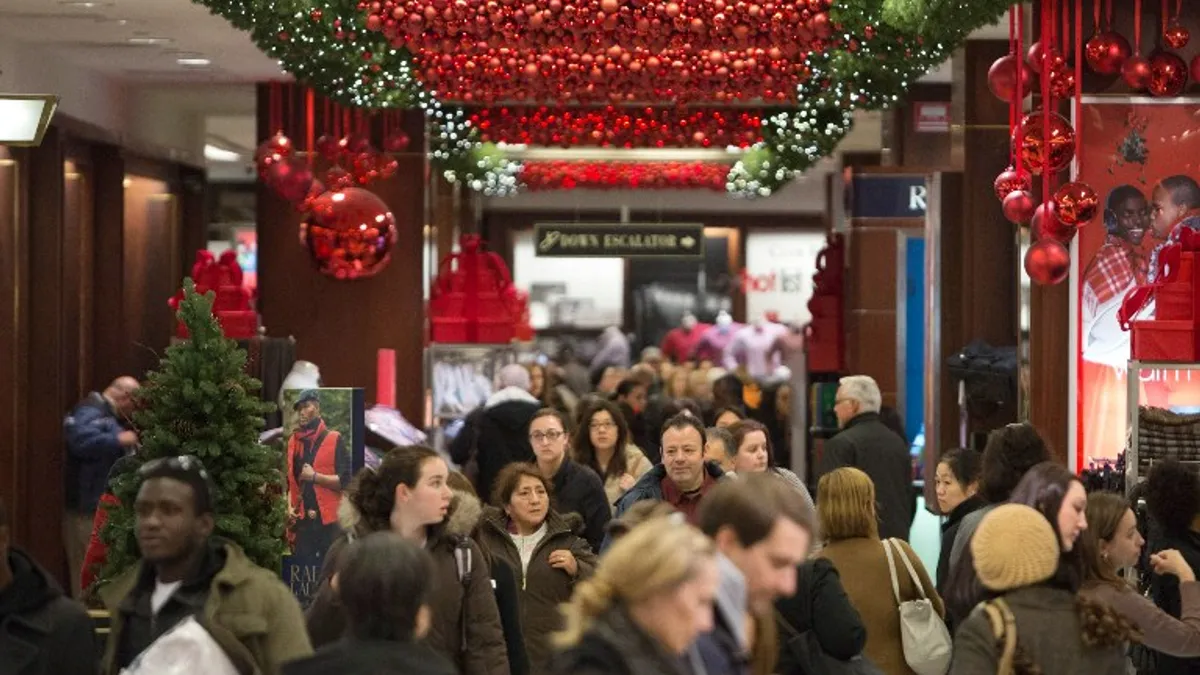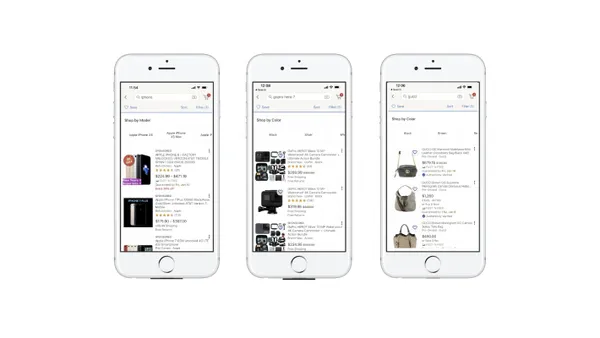Dive Brief:
-
More Americans than anticipated — more than 174 million — shopped in stores or online from Thanksgiving Day through Cyber Monday, according to number-crunching from the National Retail Federation and Prosper Insights and Analytics, which earlier had forecast 164 million shoppers in the period.
-
More than 64 million shopped both online and off, according to the study. Roughly 58 million shopped only online, while more than 51 million stuck only to stores. Those mixing it up spent on average $82 more than the online-only shopper, and $49 more than the store-only shopper.
-
Black Friday was the day to shop for 77 million of those heading to stores, followed by Small Business Saturday for 55 million. Online shoppers favored Cyber Monday, which had more than 81 million shopping online and Black Friday, when more than 66 million shopped online. Mobile made it easier: 63% used phones to make holiday decisions, and 29% actually bought something with them.
Dive Insight:
Retailers over the Thanksgiving/Black Friday weekend benefited from something of a positive conspiracy — the weather cooperated with a strong economy and consumer confidence to drive purchases, according to NRF head Matt Shay.
But confidence and a healthy economy didn't make consumers allergic to low prices — NRF’s survey found that shoppers were in the mood to find great deals. Well more than half (60%) said that most of their purchases were driven primarily by discounts, and 48% said the deals they found over the weekend were better than earlier this season.
The average spending per person over the five-day period was $335.47, with 75% of that (or $250.78 on average) specifically going toward gifts. The biggest spenders were older Millennials (25 to 34 years old), on average spending $419.52, according to NRF’s study.
Department stores did better over the weekend than they have of late, with 43% of shoppers saying they went to a department store. Otherwise, 42% shopped online, 32% at electronic stores, 31% at clothing and accessories stores and another 31% at discount stores.
What they were buying included fairly traditional items: 58% bought clothing or accessories, 38% bought toys, 31% bought books and other media, 30% bought electronics and 23% bought gift cards.
NRF found that 11% shopped before 5 p.m. on Thanksgiving Day, another 11% started at 6 p.m. On Black Friday, 25% started at 10 a.m. or later on Friday. People got up earlier for Cyber Monday: Nearly half (49%) started shopping early in the morning (which the NRF didn’t define precisely) and 41% late in the morning. Three quarters of Cyber Monday shoppers used their computers at home, 43% were on a mobile device and 13% used computers at work.
Sales during the red-letter shopping weekend were a "boom" that bodes well for the season, according to Joe Brusuelas, chief economist, middle market advisory firm RSM.
"In our estimation the improvement in employment, wages and overall spending over the past six months strongly suggested that the US household was quietly building momentum into the holiday season," he said in an email to Retail Dive. "We continue to make the case that this will be the best holiday spending season in the current business cycle."
This story is part of our ongoing coverage of the 2017 holiday shopping season. You can browse our holiday page and sign up for our holiday newsletter for more stories.














